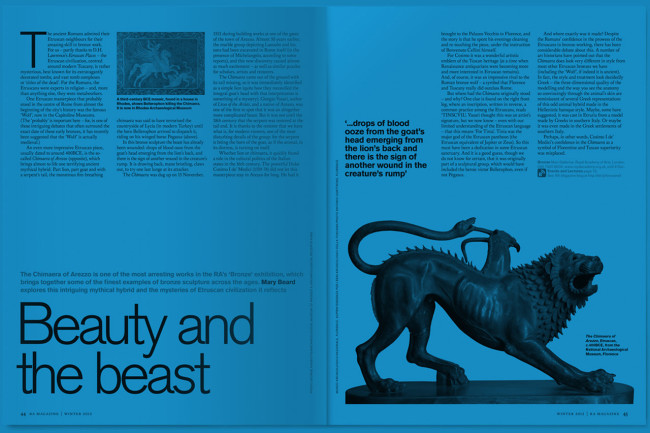The new museum putting Potsdam on the map
The new museum putting Potsdam on the map
By Sam Phillips
Published 17 March 2017
The billionaire software entrepreneur Hasso Plattner has made Potsdam an international art destination with the opening of his Museum Barberini.
-
From the Spring 2017 issue of RA Magazine, issued quarterly to Friends of the RA.
“When you build a new museum, you can only lose,” says Hasso Plattner. He is standing in front of Water Lilies, one of the most beautiful Monets I’ve ever seen, in a museum he has just built. One of the richest men in Germany, and a collector of modern art masterpieces, he doesn’t seem like a loser. Except the building he has funded is not strictly new.
Museum Barberini is a reconstruction of an 18th-century palace in Potsdam, a picturesque city bordering Berlin. “If I commission the best architect in the world,” the gregarious 73-year-old continues, addressing our group, “half of you won’t like it, whether it’s Libeskind or Foster or whoever I select, or whoever a competition selects. Something like the Guggenheim Bilbao: half of the people will find it great and the other half will say, ‘That doesn’t fit Potsdam’. Here the architecture is 100 per cent defined.”
Frederick the Great commissioned the original palace in 1750 with Rome’s magnificent Palazzo Barberini in mind. The building helped bring Baroque splendour to Potsdam, a home of the Kings of Prussia – its imposing façade was set on the city’s Alter Markt (Old Market), a piazza enclosed by Italianate architecture. In the 19th century the Barberini hosted concerts, art exhibitions and literary readings, after a statute established its use by cultural associations. But it was destroyed in air raids during the Second World War, and Potsdam’s draw for tourists since the Berlin Wall fell has been Sanssouci, Frederick’s Versailles-style residence that escaped the bombs. Now a day trip from the German capital demands some extra hours, maybe an extra day, to take in both buildings.
-

Façade of the Museum Barberini, a reconstructed Baroque palace

Hasso Plattner, the benefactor behind the Barberini

Claude Monet, Water Lilies, 1914–17.

Rear view of the Museum Barberini, Potsdam
-
Seventeen galleries strong, Museum Barberini is an expansive and exceptionally enjoyable place to view art. Its airy, elegantly proportioned rooms benefit from outstanding lighting design, allowing the Impressionism and Expressionist paintings in its opening exhibitions to appear their luminous best: the forms of Caillebotte’s sunflowers seem to grow to the sky in front of the eye, and a room full of water-themed works – the Seine and the sea, by artists including Signac and Sisley – floats the viewer away.
Plattner made his fortune as co-founder of the German software giant SAP. While he will remain the museum’s patron, paintings he owns are only temporarily on loan, alongside works from 31 other collections, both public and private, from cities including Paris, St Petersburg, Denver and Dresden. Future exhibitions will borrow less, or not at all, from his holdings – in the summer, American art will feature from Washington’s Phillips Collection – and, over time, its own art collection will grow, and its identity become less defined by its benefactor.
Plattner had considered other regions of the country for the museum, before deciding on East Germany, because its people had been “robbed twice” – by Communism and then by 1990s privatisation. “In two major steps millions of people lost all their assets. That made me think that if I make major investments, I should do it in the eastern parts of Germany… Berlin is blessed with state and private museums, and now Potsdam can make its presence felt with the Barberini.”
Impressionism: The Art of Landscape and Modern Art Classics: Liebermann, Munch, Nolde, Kandinsky, Museum Barberini, Potsdam, until 28 May 2017
-
-
Enjoyed this article?
Become a Friend to receive RA Magazine
As well as free entry to all of our exhibitions, Friends of the RA enjoy one of Britain’s most respected art magazines, delivered directly to your door. Why not join the club?

-








